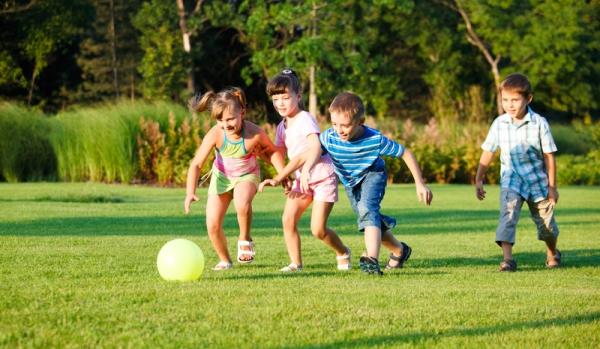Kids' ADHD Eases with Playtime in Parks or Fields

Kids with attention deficit hyperactivity disorder who regularly play outside in settings with lots of green, such as grassy open fields and parks, have milder ADHD symptoms than children who play indoors or at playgrounds, a new study shows. Researchers measured the effects of 49 common after-school and weekend activities the ADHD symptoms of more than 400 children, and found an association between playing in green outdoor settings daily or several times a week and milder ADHD symptoms. "On the whole, the green settings were related to milder overall symptoms than either the 'built outdoors' or 'indoors' settings," study researcher Andrea Faber Taylor, a University of Illinois teaching associate, said in a statement. Previous studies have shown that brief exposure to green outdoor spaces, such as fields or parks, improves concentration and impulse control in children and adults without ADHD. One study's findings suggested that just looking at photos of green settings was enough to attain positive benefits. Researchers at the University of Illinois wanted to measure the effect of routine exposure to green outdoor spaces on children diagnosed with ADHD. About 9.5 percent of children ages 4 to 17 are diagnosed with ADHD, according to 2007 data from the Centers for Disease Control and Prevention. Symptoms include poor impulse control, severe difficulty concentrating and hyperactivity. They used data from a previous study based on a national Internet survey of parents of children formally diagnosed with ADHD. The researchers looked at the green play settings, as well as the children's age, sex, formal diagnosis — ADD or ADHD — and household income. The new research also showed that kids who were diagnosed with ADHD, rather than ADD, especially tended to have milder symptoms if they regularly spent time in a green and open environment than if they played in a green space with lots of trees, or an indoor or built outdoor setting. There were no significant differences found between boys and girls or income groups in terms of the effects of green time on symptom severity. Study author and university environmental sciences professor Frances Kuo said that the findings support previous studies showing a cause-and-effect relationship between exposure to nature and improved concentration and impulse control. The study will be published in an upcoming issue of the journal Applied Psychology: Health and Well-Being. Pass it on: Kids with ADHD who routinely play in outdoor settings with lots of green, such as grassy open fields and parks, experience milder symptoms, a new study shows.
Get the world’s most fascinating discoveries delivered straight to your inbox.
